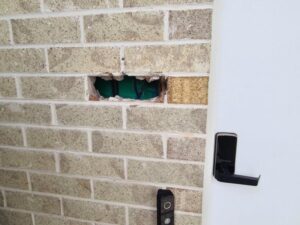Have you ever looked at the outside brick wall of a house and thought, there’s a gap between those bricks..! Is there meant to be a gap there or was this a Friday afternoon job..?!
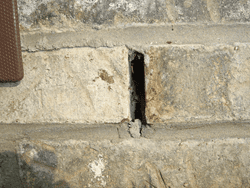
The answer is yes, they should be there and they’re very important, here’s why…
Why weep holes are important.
During a building & pest inspection the technician is going to be very interested in the presence of weep holes and whether they are being covered or encroached upon by anything.
There are 2 main reasons why weep holes are important for your home:
- Drainage
Any water that makes its way into the wall cavity, whether via rain, flooding, accidental damage, condensation or capillary action needs to be able to quickly and efficiently escape the wall cavity. The presence of weep holes correctly positioned below the height of the slab allow for the drainage of this water. - Ventilation
Adequate ventilation, meaning the movement of air in and out of the wall cavity assists in reducing the incidence of mildew, dry rot and damp. The presence of which will reduce the life of the internal wall studs and may encourage the presence of timber pests such as termites.
How do you maintain weep holes?
During a pest and building inspection the technician will specifically be looking to ensure that no obstructions such as foliage, mulch, stones, timbers or stored goods are up against or close to weep holes. Obstructions can provide a bridge or pathway for pests, including termites to enter your home. Trim back foliage regularly and keep dirt, mulch, stones, paths and timbers at least 75mm below a weep hole. The technician will also be looking for signs of termite entry via the weep holes.
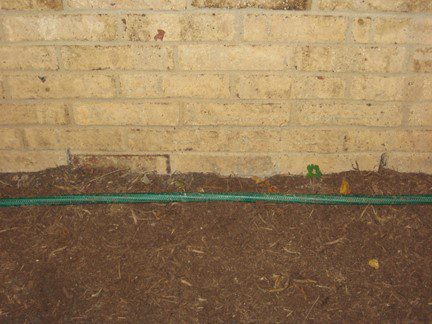
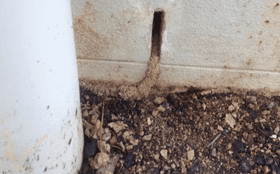
Weep holes containing termite workings
Inspections of all weep holes should be undertaken on a regular basis, checking for blockages or any signs of pest or termite entry. Signs of termite activity may appear as termite mud tracking into the weep hole. If you find signs of termite activity, do not disturb the mudding or the termites and do not spray the termites with insect spray. Contact a professional as soon as possible to assess the activity for you.
Common Obstructions
Make sure that any external fixtures such as hot water systems or air conditioning units are not obstructing the clear view of any weep holes.
Timber decking and concrete paths.
If possible, avoid the construction of timber decking up against weep holes or decking that is obstructing the view of weep holes. If you own or purchase a property with existing decking that is obstructing visibility of weep holes, ensure an access point is constructed so that regular viewing of the weep holes is still possible. (E.g. Access can be a section of the decking that can be lifted easily to provide weephole visibility or a gate opening underneath the decking providing visibility/crawl access)
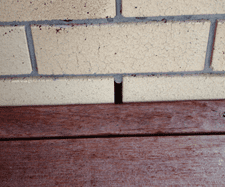

It is also common to see concrete paths or driveways installed that partially or fully conceal the weep holes. This is particularly troublesome because termites are subterranean and can gain access to your home via these covered weep holes without being detected.
External rendering or painting
When applying render or paint to the external walls of a dwelling, make sure that the weep holes are still left visible and clear of obstructions during this process. If you are purchasing a brick veneer property with external rendering applied, check for the visibility of weep holes. If no weep holes are visible, then investigate further into the reason for their concealment.
Where are weep holes supposed to be positioned?
The Australian Standards state
Weepholes shall be provided wherever it is necessary to drain moisture from or through masonry construction. Where flashings are incorporated in the masonry, weepholes shall be provided in the masonry course immediately above the flashing, at centres not exceeding 1200 mm.
Meaning that weeps holes are required in more places than just around the ground floor slab of a house. A qualified building inspector will be able to assist you in identifying whether there are issues with the weep holes of the property you are planning to purchase.
Call us on 1300 553 007 during business hours, Monday to Friday from 8:00am to 5:00pm & Saturday 9:00am to 4:00pm to speak to one of our friendly team. Request an obligation free quote 24/7 via our Free Quote Form


